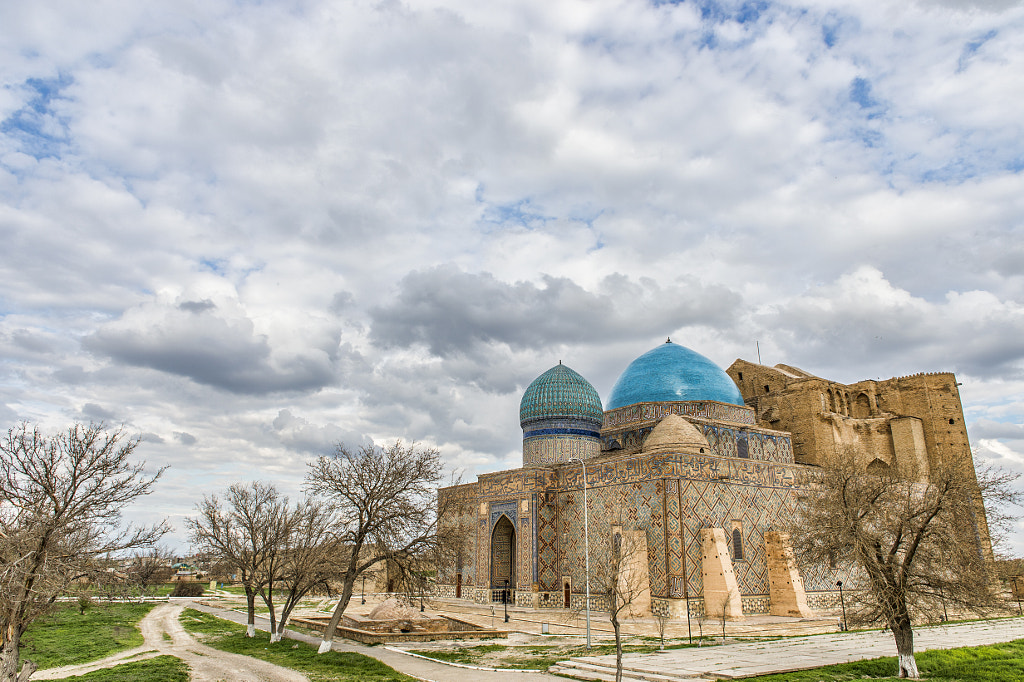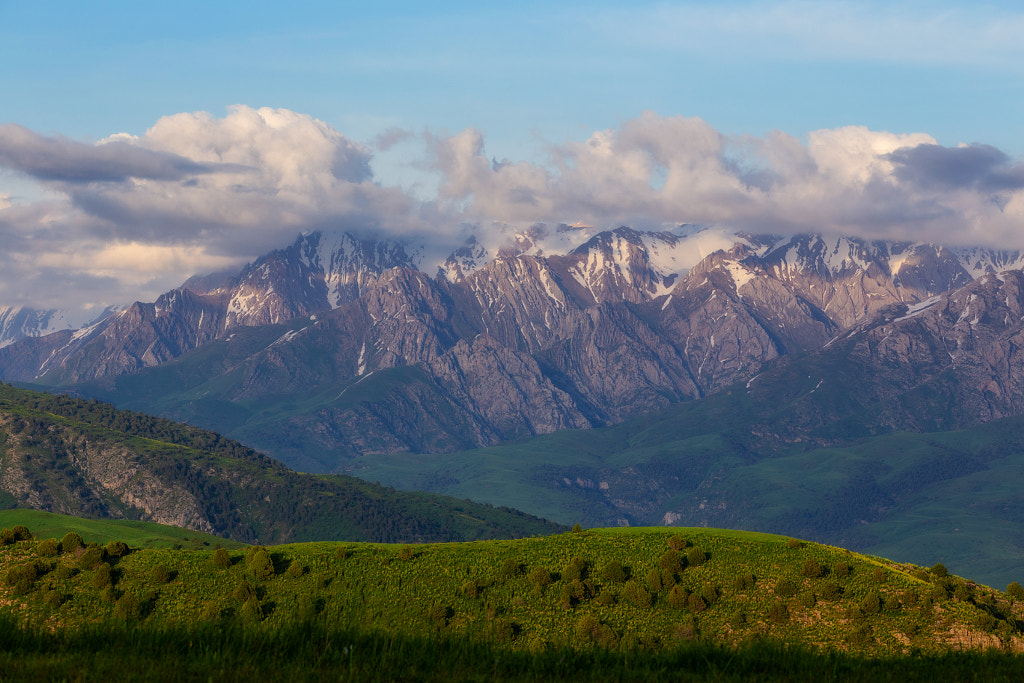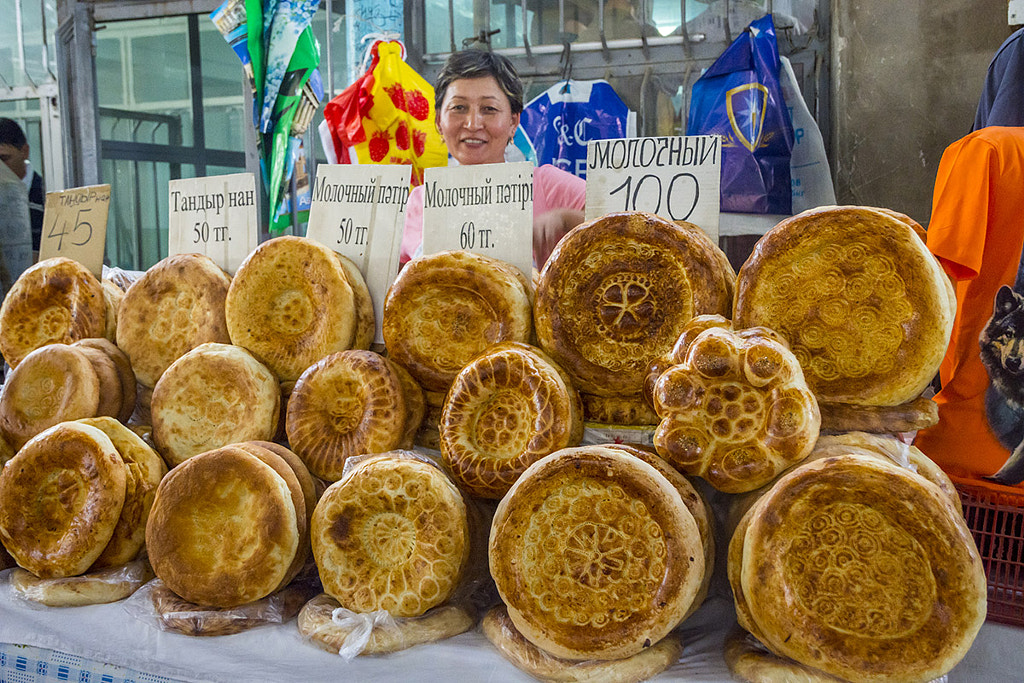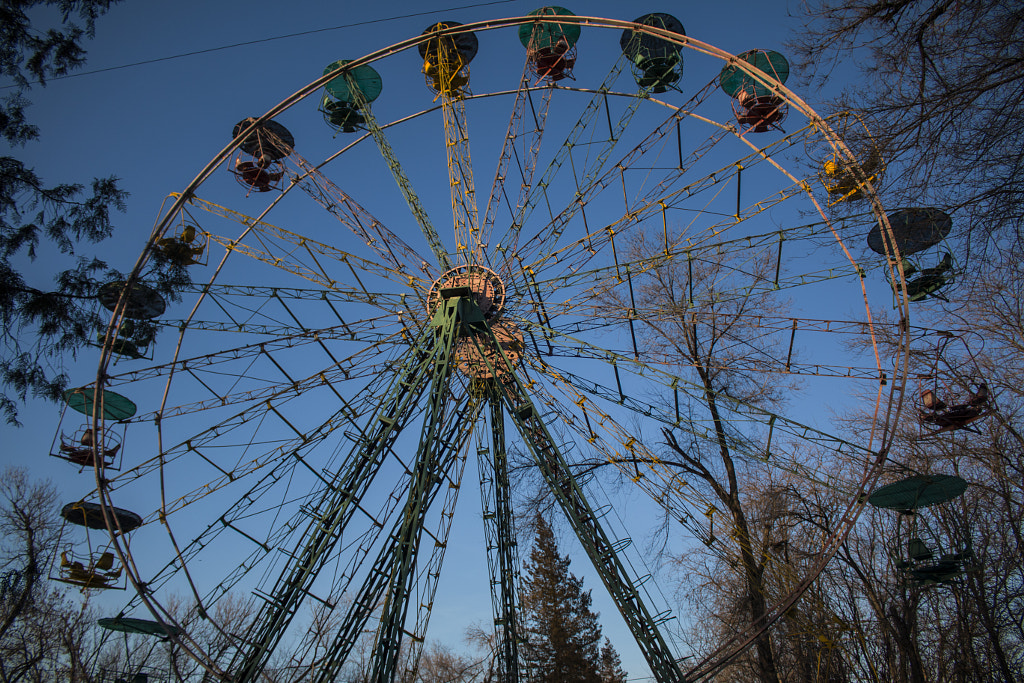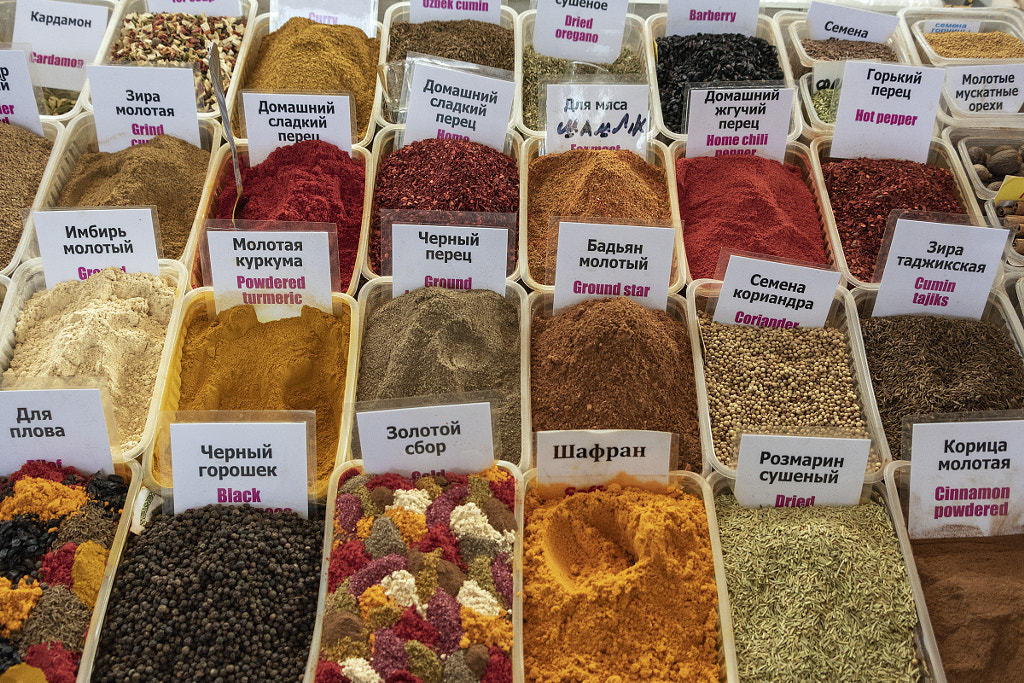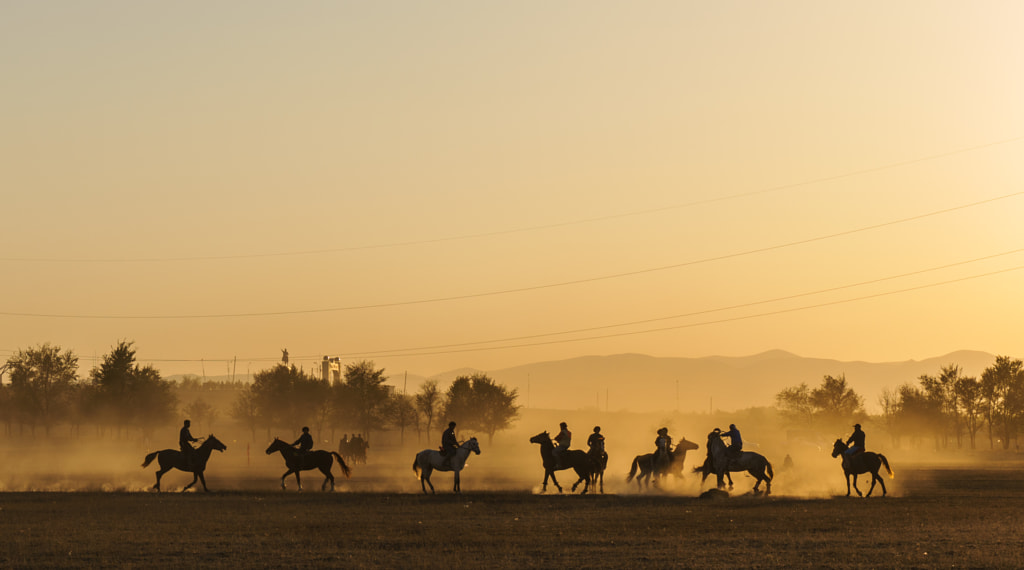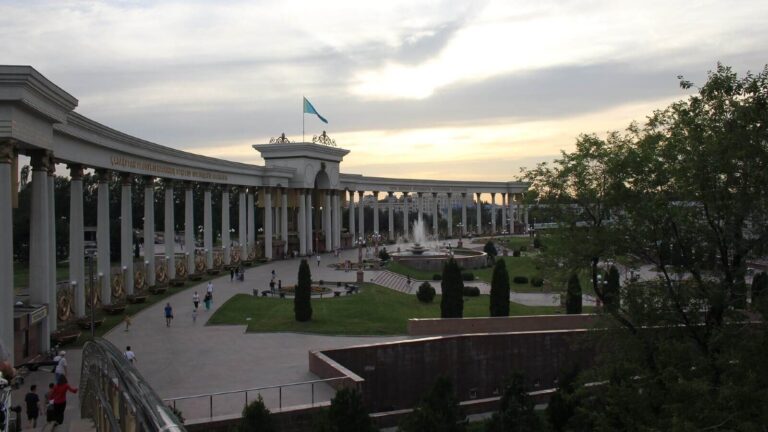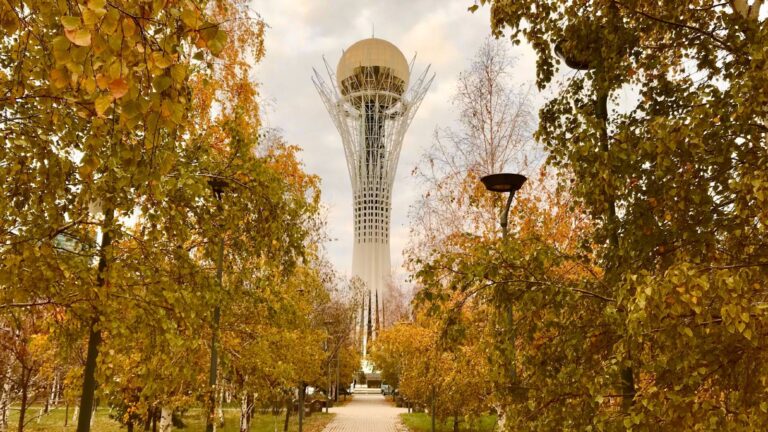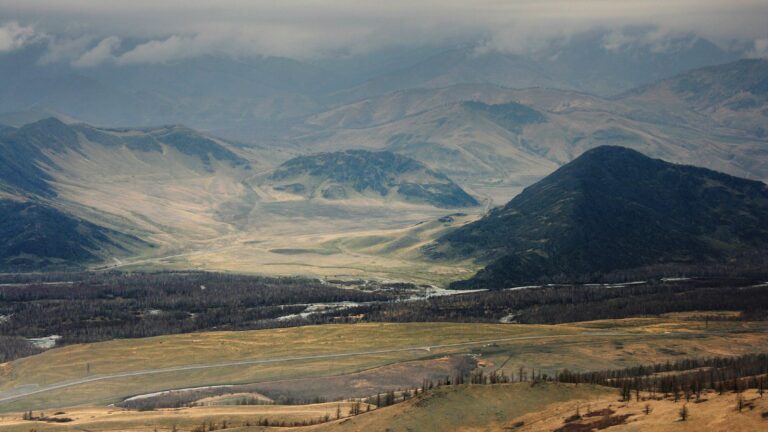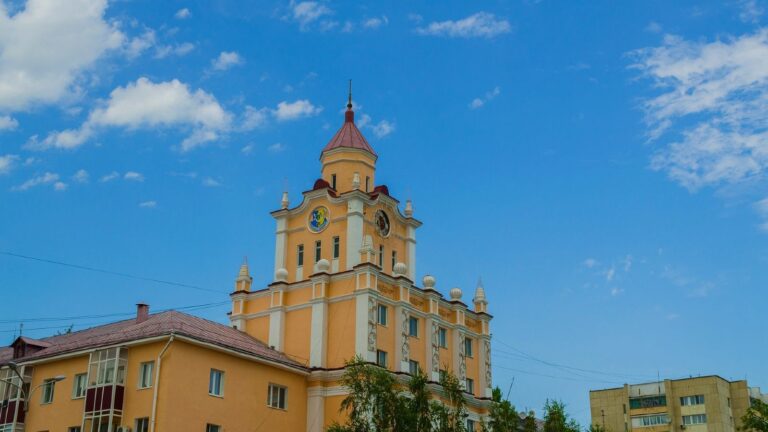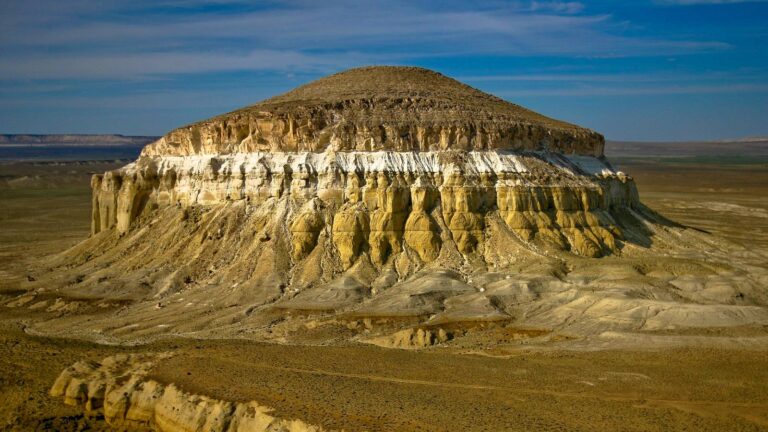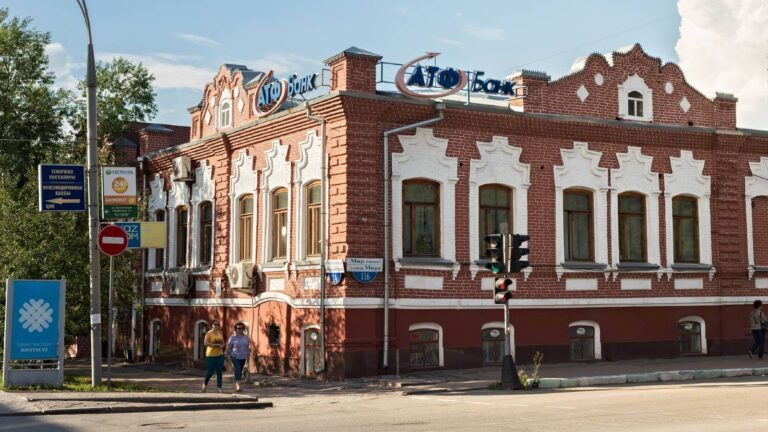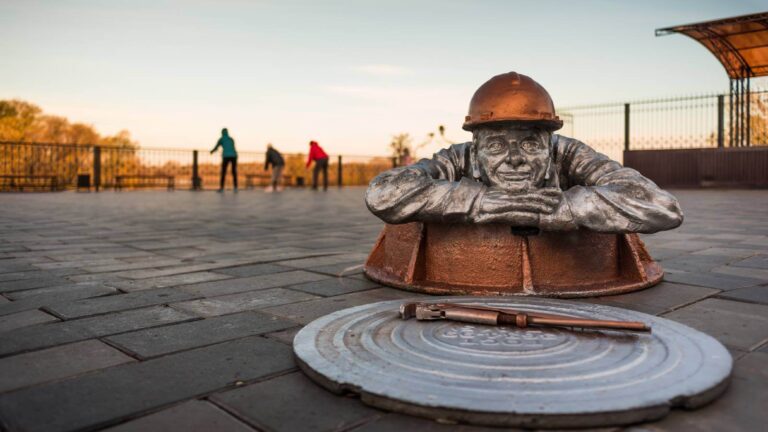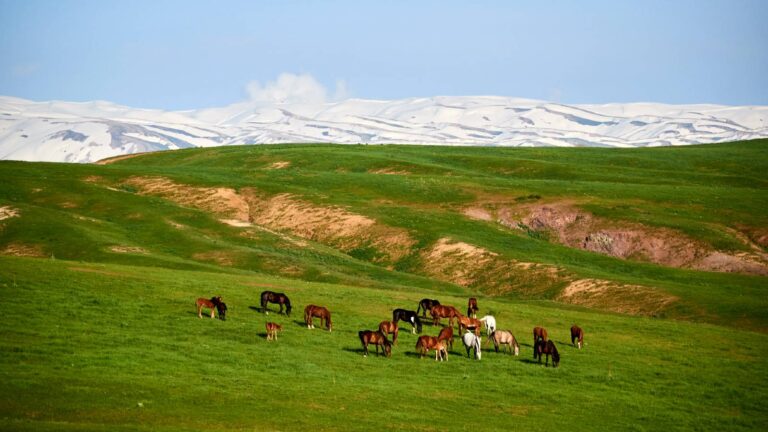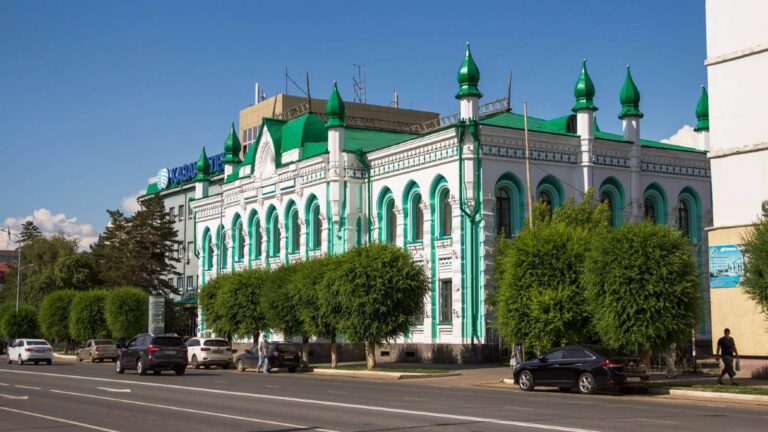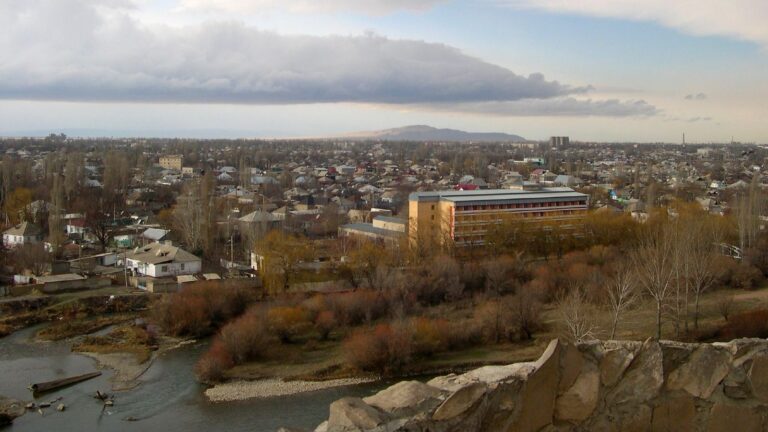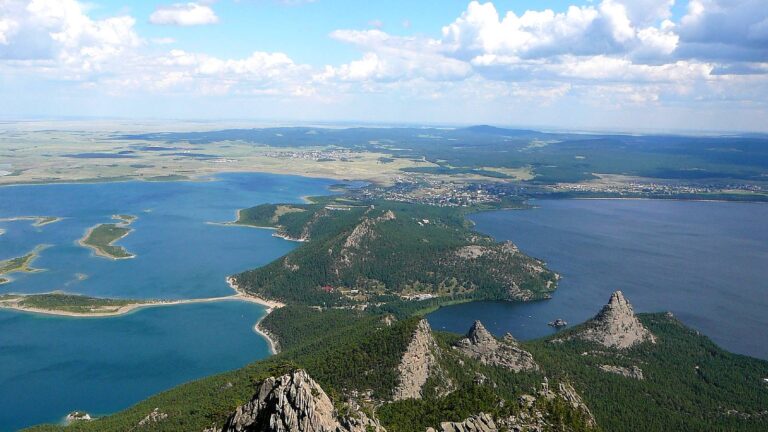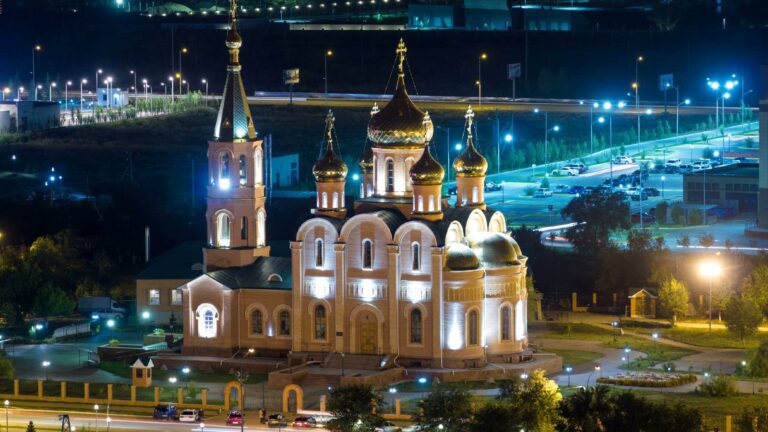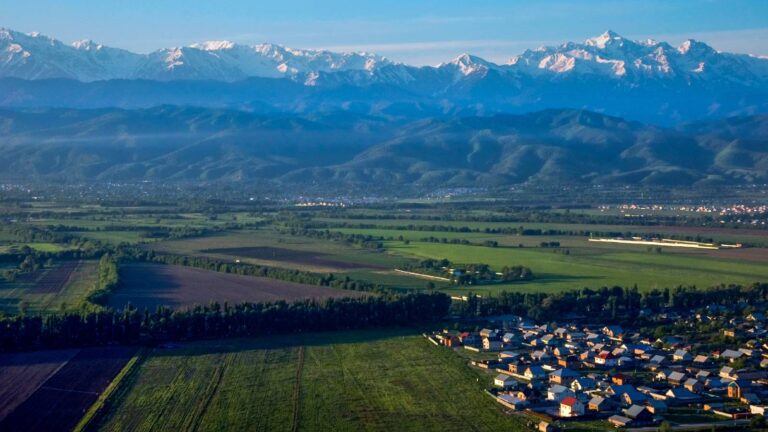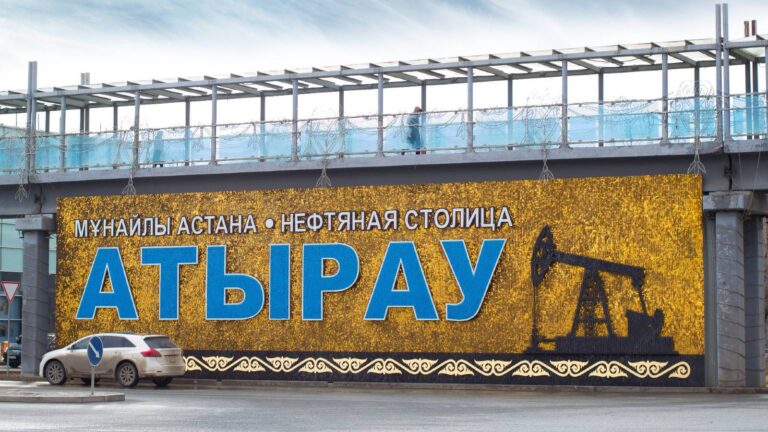Shymkent is easily reached from Tashkent by a cross-border bus. Fast and slower rail connections as well as flights connect Shymkent to other regional capitals in Kazakhstan.
Detailed information on trains and buses can be found on the city’s tourist portal visit-shymkent.kz.
A must-visit destination in the region is Turkestan, an ancient city with a rich historical heritage. Explore the stunning mausoleum of Khoja Ahmed Yasawi, a UNESCO World Heritage site, and witness the grandeur of Timurid Islamic architecture.
In the steppe, sacred sites like the Mausoleum of Arystan-Bab alternate with ruins from the region’s Silk Road past, like Otrar, the capital of southern Kazakhstan until Genghis Khan passed by.
Time your trip to the Aksu-Zhabagly Nature Reserve, one of the oldest and most diverse reserves in Central Asia, to enjoy the spectacular sight of millions of wild tulips blossoming. The rest of the year, the reserve is perfect for birdwatching and wildlife spotting as you hike across canyons and mountain slopes.
In Shymkent, every tourist can find a variety of leisure activities: history, entertainment, and sightseeing tours on a bus. Moreover, the local cuisine will delight the city’s guests. Shymkent is renowned for its delicious and reasonably priced food.
Firstly, it is recommended to visit the Old Town complex. The healing river Koshkar ata flows through this area, and the Citadel, which has been undergoing restoration, provides evidence of the city’s 2,200-year-old history. Additionally, you can take a stroll through Independence Park and explore Ordabasy Square.
The sacred objects of Sairam are another significant tourist attraction in Shymkent. The mausoleums of Kh.A. Yasavi Ibrahim Ata and Karashash Ana’s parents, which mark the starting point of the pilgrimage route to the mausoleum of Kh.A. Yasawi, can be found here.
History enthusiasts are encouraged to explore the city’s museums, including the Museum of History and Local Lore, the Museum of Political Repression Victims, the Abai Museum, and even the Museum of Retro Cars. Moreover, in the Sairam residential area, you’ll discover Martobe, a hill-fortification known as the “steppe parliament” where fateful decisions for the Kazakh people were believed to have been made, along with the “Khyzyr” minaret and the mausoleums of Abdul Aziz Baba and Mirali Baba.
For enthusiasts of outdoor walks, we highly recommend spending time in any of the city’s parks, such as the Arboretum, Zoo, Central Park, Abay Park, and Ken Baba. Additionally, don’t miss the opportunity to ride the Altyn Eye Ferris wheel in Zhailaukol Park and, of course, take a leisurely stroll along the evening Arbat.
Petroglyphs in the Aksu-Zhabagly Nature Reserve testify that the area was already inhabited at a time when hunter-gatherers were still dominant. As populations grew, the region’s strategic location along the Silk Road facilitated trade and cultural exchange.
In the 13th century, the region came under the rule of the Mongol Empire led by Genghis Khan. After significant destruction, the Pax Mongolica improved trade links with the whole of the enormous Mongol Empire.
During the 14th and 15th centuries, the region became part of the Timurid Empire, led by the renowned conqueror Timur (Tamerlane). The city of Turkestan, located in the Shymkent region, served as a major cultural and religious centre during this time.
A detailed view
The city arose at the intersection of caravan roads of one of the Great Silk Road sections. It is part of the most ancient cities of Central Asia and has a rich history and culture. Unlike many cities of Kazakhstan, founded during the Russian Empire borders expansion, Shymkent was founded much earlier. The first mentions of it are found in written sources of the first half of the fifteenth century, but there is every reason to assume that the city is even older.
Archaeological research began in Shymkent only in 2003. Until this time, no serious research has been carried out. At the entrance of the excavations, pottery and other objects of culture and everyday life were found dating back to the end of the third – beginning of the second centuries BC. It is quite possible that the city is already 2,200 years old, but as a result of numerous wars accompanied by the almost complete destruction of the city, we will never see priceless monuments of the ancient history of Shymkent.
In the era of prosperity of the Great Silk Road, Shymkent stood at the crossroads of its caravan routes. This advantageous position, on the one hand, gave the city excellent opportunities for development, on the other hand, made it a tempting target for numerous conquerors.
In the thirteenth century, Shymkent was captured by the Mongol-Tatars and became part of the Golden Horde. In the fourteenth, after bloody battles, the city passed into the possession of Ak-Orda. In the sixteenth century, Shymkent is part of the Kazakh Khanate. Later it was captured by the Dzungars, then by the Konkand people. Each battle brought new destruction, then a period of recovery followed, until another destructive war.
In the second half of the nineteenth century, Shymkent became part of the Russian Empire and an important link between the European part of Russia, Central Asia and Western Siberia. With the advent of the Soviets, industry is actively developing in Shymkent. In 1930, lead production begins. And during the Great Patriotic War, Shymkent supplied millions of lead bullets to the Soviet troops.
Traditional games such as kokpar (a horseback game also known as dead goat polo), audaryspak (wrestling), and kyz kuu (a chasing game on horseback) are part of the region’s cultural heritage. These games are not folklore, they are part of people’s everyday lives. Public holidays like Nauryz and Independence Day are the best times to watch these games.
The region is traversed by the Syr Darya river, which provides water for agriculture and supports the growth of lush vegetation. The foothills of the Tien Shan mountains form the border with Uzbekistan, where one can find the Aksu-Zhabagly Nature Reserve, a biodiversity hotspot, and the Karatau Nature Reserve, known for its unique geological formations.
Summers are hot and dry, with temperatures reaching highs of around 35°C (95°F) in July. Winters are cold, with temperatures dropping to below freezing, averaging around -5°C (23°F) in January. Spring and autumn are transitional seasons with mild temperatures. The region receives relatively low precipitation, with the majority falling during the spring and autumn months.
Agriculture plays a significant role in the region’s economy. The fertile plains and favourable climate support the cultivation of crops such as wheat, corn, fruits, and vegetables. Livestock farming is also an important employer.
The region also has significant reserves of natural resources, including coal, uranium and other minerals. The Shymkent Oil Refinery plays a crucial role in the country’s petrochemical industry.
Finally, Shymkent’s proximity to Tashkent in Uzbekistan makes it an essential trade and logistics hub within Kazakhstan.

